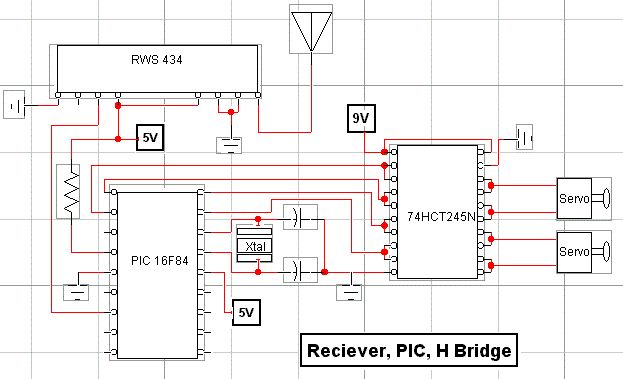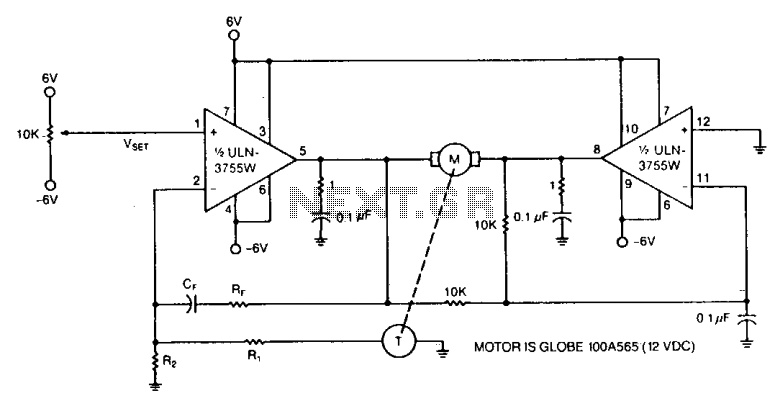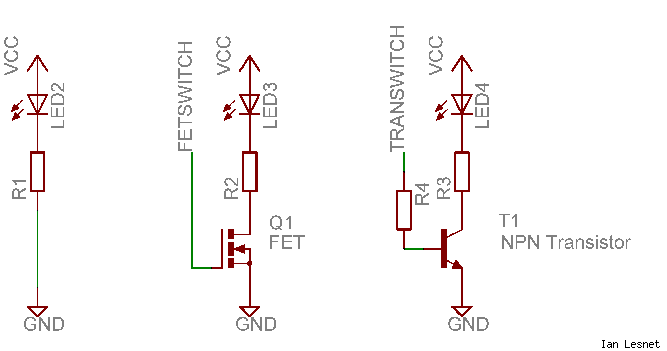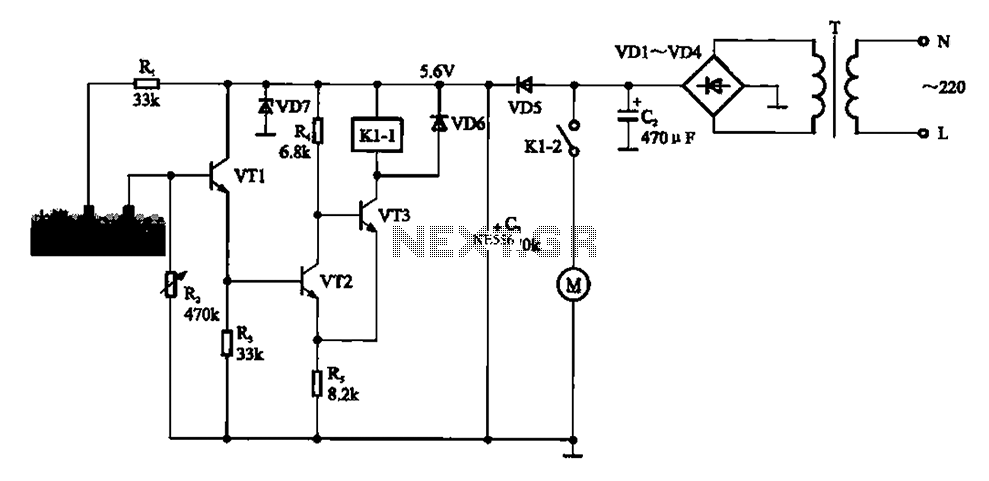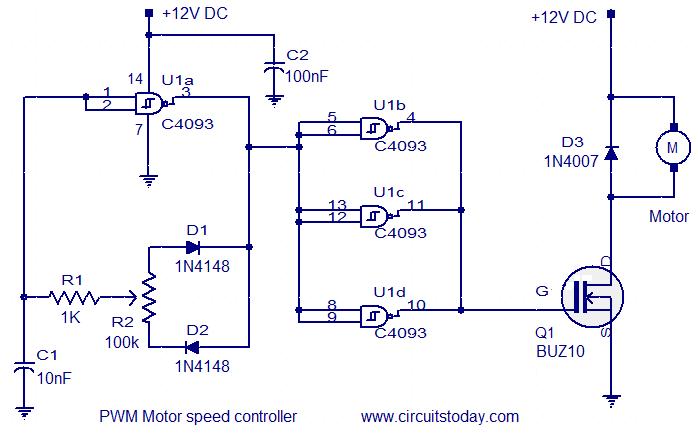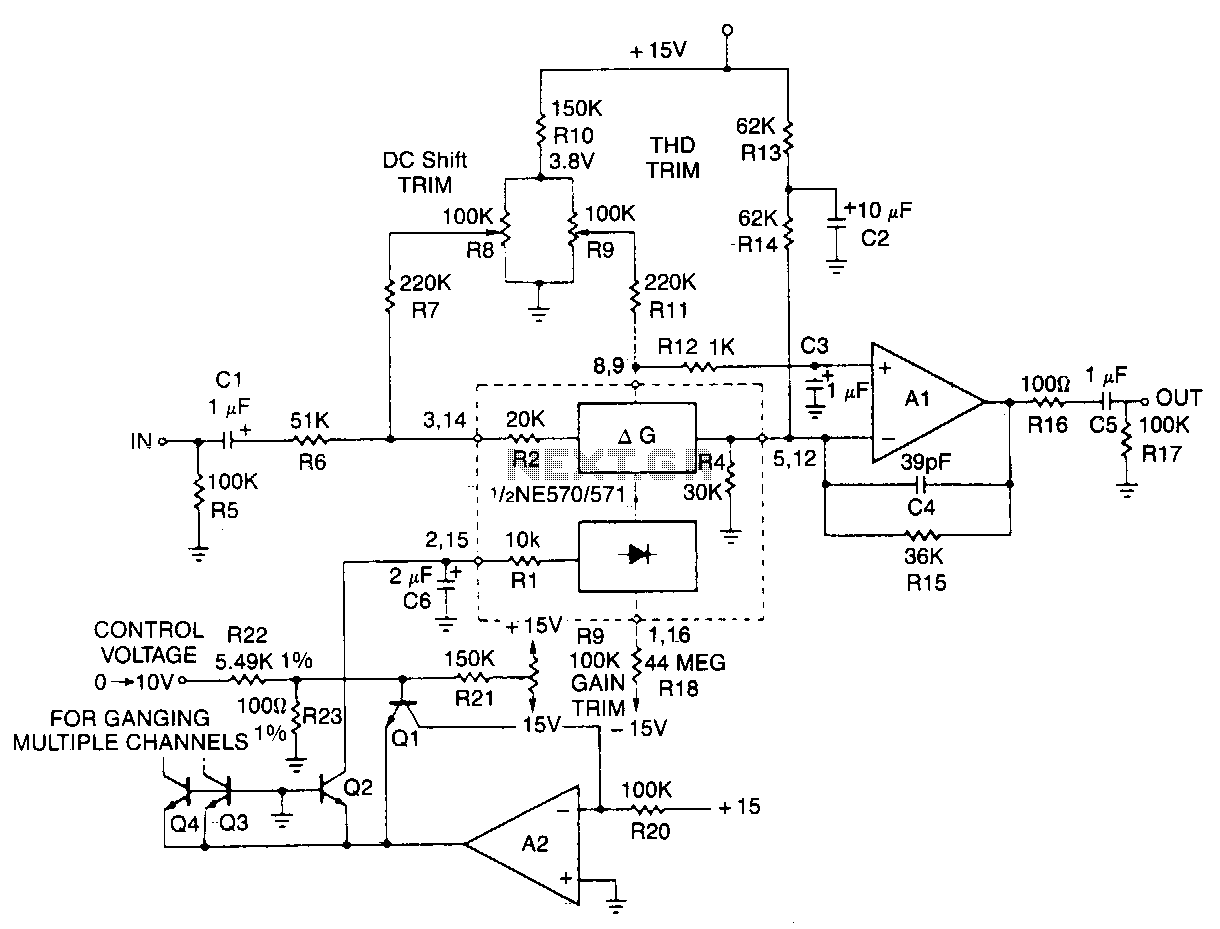
instrument panel lamp dimmer control
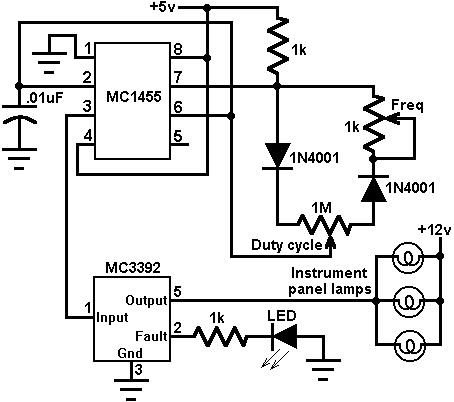
This circuit utilizes an MC3392 low-side protected switch along with an MC1455 timing circuit to create a dimmer control for automotive instrumentation panel lamps. The brightness of incandescent lamps can be adjusted by applying Pulse Width Modulation (PWM) to the input of the MC3392.
The circuit design integrates an MC3392, which functions as a low-side switch, allowing it to control the current flowing to the automotive panel lamps. The MC1455, a timing circuit, is configured to generate a PWM signal that modulates the duty cycle of the output signal. By varying the duty cycle, the average voltage supplied to the lamps is adjusted, thereby controlling their brightness.
The MC3392 is equipped with built-in protection features, ensuring that the circuit can handle load variations and prevent damage to the components. The low-side switching configuration is advantageous in automotive applications as it helps to minimize electromagnetic interference (EMI) and ensures efficient operation.
The MC1455 is typically configured in an astable mode to produce a continuous PWM signal. The frequency and duty cycle of this PWM signal can be adjusted by changing the values of the resistors and capacitors in the timing circuit. This versatility allows for precise control over the lamp brightness, catering to different user preferences and lighting conditions.
In summary, this circuit effectively combines the MC3392 and MC1455 to provide a reliable and adjustable dimming solution for automotive instrumentation panel lamps, enhancing visibility and user experience while maintaining safety and component integrity.This circuit uses an MC3392 low side protected switch and an MC1455 timing circuit to form an automotive instrumentation panel lamp dimmer control. The brightness of incandescent lamps can be varied by Pulse Width Modulating the input of the MC3392..
🔗 External reference
The circuit design integrates an MC3392, which functions as a low-side switch, allowing it to control the current flowing to the automotive panel lamps. The MC1455, a timing circuit, is configured to generate a PWM signal that modulates the duty cycle of the output signal. By varying the duty cycle, the average voltage supplied to the lamps is adjusted, thereby controlling their brightness.
The MC3392 is equipped with built-in protection features, ensuring that the circuit can handle load variations and prevent damage to the components. The low-side switching configuration is advantageous in automotive applications as it helps to minimize electromagnetic interference (EMI) and ensures efficient operation.
The MC1455 is typically configured in an astable mode to produce a continuous PWM signal. The frequency and duty cycle of this PWM signal can be adjusted by changing the values of the resistors and capacitors in the timing circuit. This versatility allows for precise control over the lamp brightness, catering to different user preferences and lighting conditions.
In summary, this circuit effectively combines the MC3392 and MC1455 to provide a reliable and adjustable dimming solution for automotive instrumentation panel lamps, enhancing visibility and user experience while maintaining safety and component integrity.This circuit uses an MC3392 low side protected switch and an MC1455 timing circuit to form an automotive instrumentation panel lamp dimmer control. The brightness of incandescent lamps can be varied by Pulse Width Modulating the input of the MC3392..
🔗 External reference
